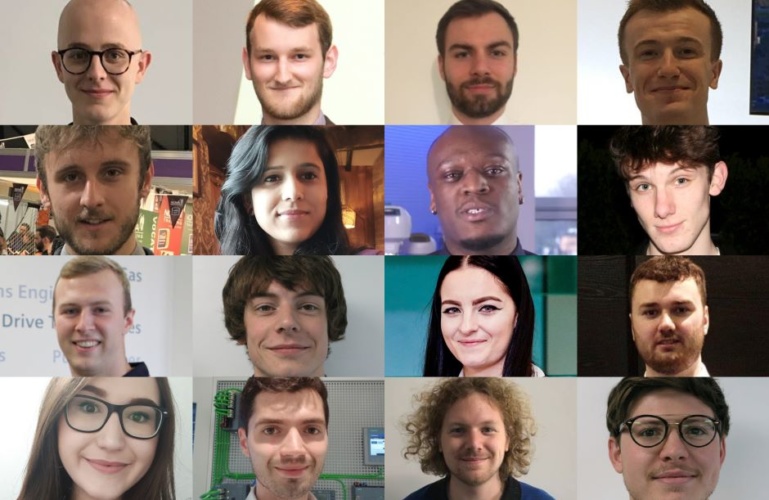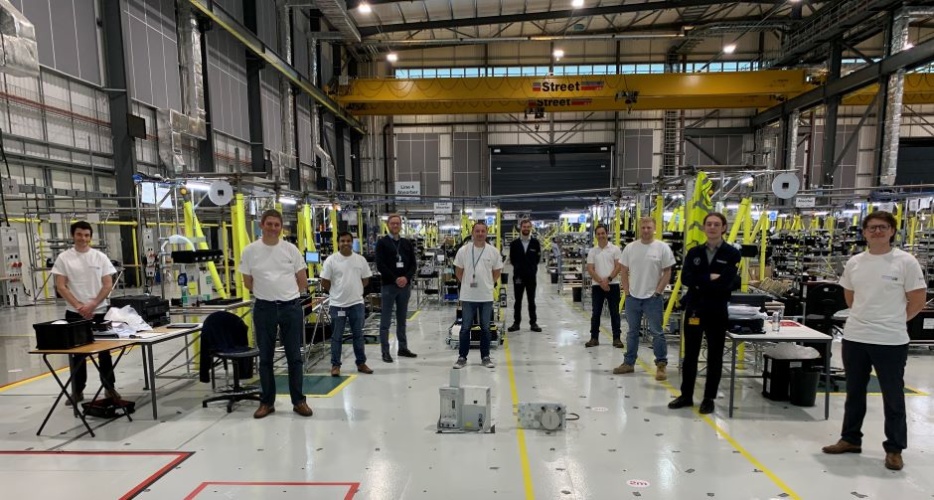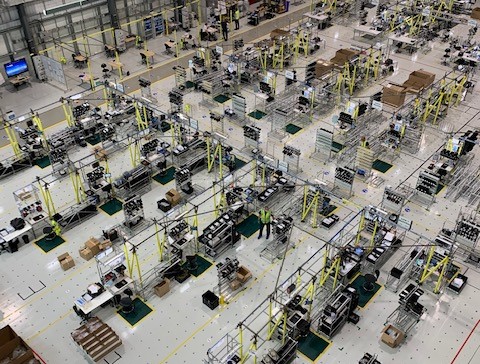
A team of 100 people from Siemens UK, Digital Industries (DI), Industry Software, Siemens Healthineers and Siemens Energy - enabled the Ventilator Challenge UK consortium to achieve its target of producing 13,500 medical devices in 12 weeks.
Interview: Dick Elsy on leading the Ventilator Challenge UK consortium
This included apprentices and young engineers at Siemens Digital Industries in Manchester and Congleton, who, working from home, helped design and build a factory from scratch and scale production from 10 ventilators to 1,500 per week.
Using Siemens’ digital enterprise portfolio, they were able to design, validate and deliver a sub-assembly factory with manufacturing capacity for 1,500 ventilators per week within four weeks, against an industry norm of over 12 months.
Led by Andrew Peters, managing director of Siemens’ digital factory in Congleton, the first major achievement by the team was to create a digital twin of the Airbus AMRC Cymru in Broughton - one of seven new large-scale manufacturing facilities needed by the consortium - within 48-hours.

Ben Apps, 28, Plant Layout and Virtualisation Engineer at Siemens Congleton, said: “Not only did we have to find a solution to enable us to ramp up production from 10 ventilators, we had to use multiple production lines and ensure social distancing of the hundreds of operators.
“By creating a digital twin of the AMRC, mapping every inch of the available space, calculating all throughput, and using 3D design tools, we were able to maximise production massively. What was also remarkable was that digital tools enabled us to design the production line virtually in six days, saving thousands of pounds and hours in the real world.”
Matt Danby, 24, a production engineer at Siemens Congleton, was tasked with developing the fastest and most efficient build sequence and training the operators.
“The ventilator is a complicated product with 400 individual parts,” he said. “To design a brand new build sequence would normally take anywhere between 6-12 months. We managed it in two weeks which is staggering.
“We were also able to incorporate digital work instructions that played an animated work sequence which allowed the operator to change the viewing angle, pause and see the products virtually in snapshots. It helped speed up the training process.”
Elliot Bloor, a Higher Industrial engineering Apprentice at Siemens Congleton, worked on the timings for production.
“Our starting point was a video from building a ventilator,” he explained. “We had to break that down into chunks and take timings. We put that data into Siemens’ Plant Simulation software. From that we could determine how many ventilators we could make in a day or week, and how many operators we'd need to make them. That simulation allowed us to be able to say to partners and the government how many we could build and what we needed to build it.”
Once manufacturing had started, Siemens DI also drafted in 11 of its young engineers to solve a problem which was slowing up assembly of a key component of the ventilator.

Using a four-day hackathon, and under strict social distances measures, the group - which included Michal Zlotek, Joe Tasker, Zack Brown, Ben Parry, Liv Kelly, Matt Clarkson, Ryan Durbridge, Anubhi Khandelwal, Connor Hendry, Jess Reading, Elliot Baskerville, Gabriel Vijent and John Mackey - used Siemens NX and Solid Edge CAD software to design, simulate, build and test a manufacturing aid that helped reduce the calibration time from 40 minutes to two.
The contribution enabled the ventilator peak production to exceed 400 devices a day and for the consortium to achieve its life-saving goal.
Brian Holliday, Managing Director, Digital Industries, Siemens UK and Ireland, said: "These young men and women can now take these valuable lessons and experiences in the next step of their careers with Siemens and become the manufacturing leaders of tomorrow.”

Swiss geoengineering start-up targets methane removal
No mention whatsoever about the effect of increased methane levels/iron chloride in the ocean on the pH and chemical properties of the ocean - are we...